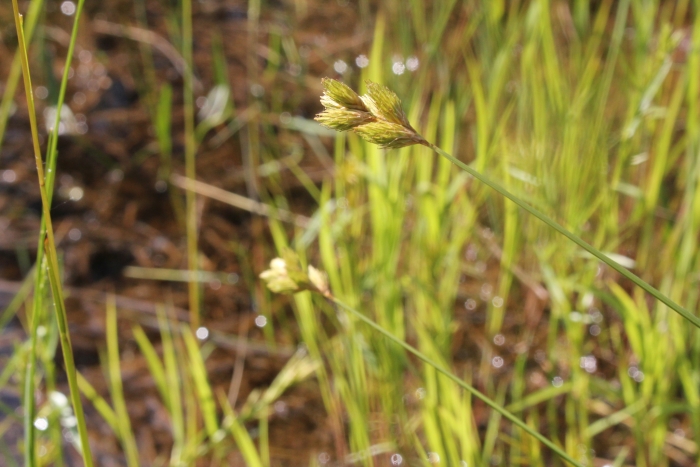Pointed Broom Sedge
(Carex scoparia)
Pointed Broom Sedge (Carex scoparia)
/
/

Quinten Wiegersma
CC BY 4.0
Image By:
Quinten Wiegersma
Recorded By:
Copyright:
CC BY 4.0
Copyright Notice:
Photo by: Quinten Wiegersma | License Type: CC BY 4.0 | License URL: http://creativecommons.org/licenses/by/4.0/ | Rights Holder: Quinten Wiegersma | Publisher: iNaturalist | Date Created: 2020-07-08T16:52:08-07:00 |






































Estimated Native Range
Summary
Carex scoparia, commonly known as Pointed Broom Sedge, is a perennial sedge that is often evergreen but can be semi-deciduous depending on the climate. It is native to wet meadows, marshes, and along the edges of ponds and streams in North America, particularly in the eastern and central regions. This sedge typically forms dense clumps reaching 20 centimeters to one meter in height, with narrow, grass-like leaves that can grow up to about 30 centimeters long. The inflorescence consists of a cluster or open array of several bullet-shaped spikes of flowers, which are more interesting for their texture than their color, as they are green and blend in with the foliage. Pointed Broom Sedge blooms in the summer.
In cultivation, Pointed Broom Sedge is valued for its ability to thrive in wet conditions and its utility in soil stabilization and water filtration in landscape settings. It is often used in rain gardens, wetland restoration projects, and as a naturalistic element in garden borders. It prefers full sun to part shade and requires medium to high amounts of water, making it suitable for areas with moist soils. While it is not particularly demanding regarding soil type, it does best in soils with medium to fast drainage. Gardeners should be aware that in ideal conditions, Carex scoparia can spread vigorously and may require management to keep it in bounds.CC BY-SA 4.0
In cultivation, Pointed Broom Sedge is valued for its ability to thrive in wet conditions and its utility in soil stabilization and water filtration in landscape settings. It is often used in rain gardens, wetland restoration projects, and as a naturalistic element in garden borders. It prefers full sun to part shade and requires medium to high amounts of water, making it suitable for areas with moist soils. While it is not particularly demanding regarding soil type, it does best in soils with medium to fast drainage. Gardeners should be aware that in ideal conditions, Carex scoparia can spread vigorously and may require management to keep it in bounds.CC BY-SA 4.0
Plant Description
- Plant Type: Grass, Grass
- Height: 1-2 feet
- Width: 2-3 feet
- Growth Rate: Moderate
- Flower Color: N/A
- Flowering Season: Summer
- Leaf Retention: Evergreen
Growth Requirements
- Sun: Full Sun, Part Shade
- Water: Medium, High
- Drainage: Medium, Fast
Common Uses
Bird Garden, Deer Resistant, Erosion Control, Groundcover, Street Planting, Water Garden
Natural Habitat
Native to wet meadows, marshes, and along the edges of ponds and streams in North America
Other Names
Common Names: Lance-Fruited Oval Sedge, Broom Sedge, Swamp Sedge, Carex À Balais
Scientific Names: , Carex scoparia, Carex scoparia var. scoparia, Carex scoparia var. condensa, Carex scoparia f. moniliformis, Carex scoparia f. condensa, Carex scoparia f. scoparia, Carex scoparia var. moniliformis, Carex scoparia var. subturbinata, Carex tribuloides var. moniliformis
GBIF Accepted Name: Carex scoparia Schkuhr ex Willd.